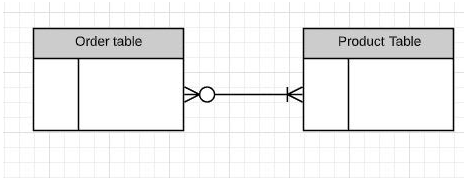Best practices for utilizing entity-relationship diagrams in your business
Businesses that are new to applying ERDs to their processes can benefit from the following best practices:
Outline only what’s necessary to understand the process clearly
When mapping out a business process using an ERD, it helps to think in the abstract. ER models are intended to be simplified representations of what occurs in actuality. Only include what’s necessary to understand how entities relate within a specific process. All other details should be recorded in other documentation.
Look for any redundancies or missing areas
Each entity type should be distinct, unique, and easily identified by its associated attributes. All other weak entities should be removed or further fleshed out. If there are any challenges in defining entities, it’s a good time to consider whether these entities are truly useful in the specific business process and if any other entities would be better alternatives.
Design your ERD for your intended purpose
There are many generalizations and ways to approach the entity-relationship model. But the best is one that fits and clearly illustrates your business process. As long as you provide all the necessary information for your teams to understand how a process should run, ERDs can be customized according to how they support your overall operations.
Avoid mistakes in your order management process
When fulfilling orders of various sizes, weights, and item numbers, having a predetermined logic for picking, packing, and shipping is critical. What if your warehouse personnel had to independently determine shipping best practices for each individual order?
Although ERDs can be a little tricky, a basic understanding of these diagrams enables you to communicate and codify the relationships and rules that govern your order management system. Similarly, activity diagrams are used to demonstrate the order in which actions must occur and bring clarity to the process. These tools can be further used as maps to build the database table to bring your order management software to life.
The good news is you don’t necessarily need to build your order management system from scratch. There are numerous options for business-ready, customizable order management software solutions. These enterprise-grade solutions include order fulfillment, processing, tracking, inventory management, invoicing, and more.
A properly functioning order management software that matches the correct items and orders to the right delivery processes saves your business time and money, and keeps your customers coming back.

















